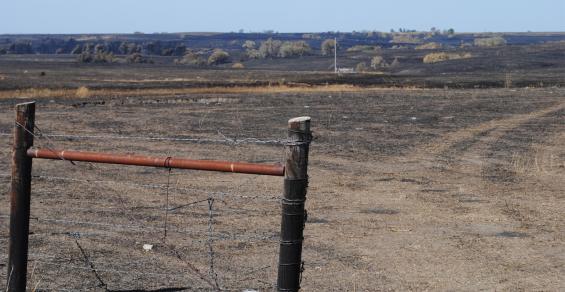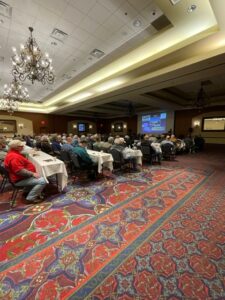Nebraska Extension crops, livestock, food and families teams have put together a series of questions and answers to help with farm and ranch management decisions after wildfires. While this information may not hit every question producers might face, it is a good starting point.
This article focuses on pasture and grazing questions:
How do I determine where soil moisture is in my field or pasture or rangeland? One way is to use a long steel rod with a ball at the top that can be pushed into the soil. A change in the resistance to pushing the rod into the soil will usually indicate the depth of soil water recharge. Soil water recharge to only 1.5 feet by the end of April is very low, and soil moisture to 6 feet is very good. But note, fields that were irrigated last year will likely be closer to field capacity this spring.
How do I determine stocking rates for my burned pasture or rangeland? First, if only a portion of the pasture or rangeland was burned, it’s wise to fence off the area and graze it as a separate pasture. Otherwise, we’ve seen cattle prefer the new growth in burned areas, and they tend to grub out the grass, resulting in additional problems for future years.
The stocking rate should be reduced by 25% to 50% of what was normally used for that pasture. An important objective of this is to leave adequate residue, which will become litter on the ground. This is to replace what was lost in the fire. Rainfall in May and June will be most critical and should be the guiding factor affecting stocking rate decisions.
What should I do with the pasture areas that were disked to create a fire break? Ideally, these areas should be reseeded using the same grass species found in the rest of the pasture. If this cannot be done by the end of May, a summer annual forage crop could be planted as a cover, and then plan for reseeding the perennial grasses next spring.
Will there be an increase in weeds in the pasture that was burned? It is not uncommon to see a greater number of annual weeds show up in a pasture after a fire. While this may look concerning, these weeds can actually be useful and have some forage value, or will turn into residue and cover at the end of the season. Their numbers will decline the following year.
Nebraska Extension experts answer common questions about pastures, rangeland and grazing after a wildfire.





